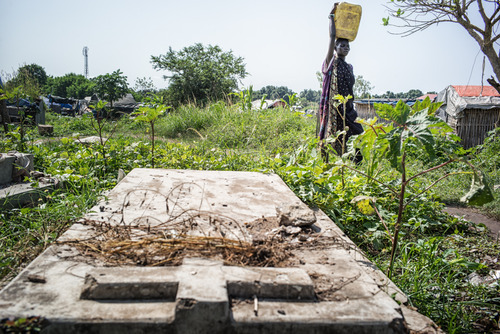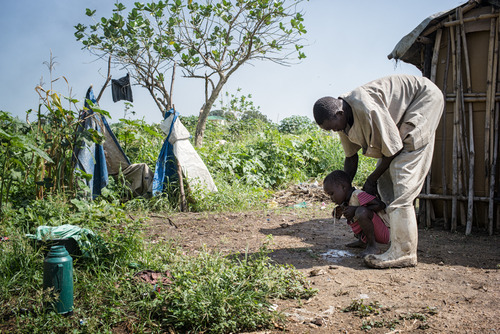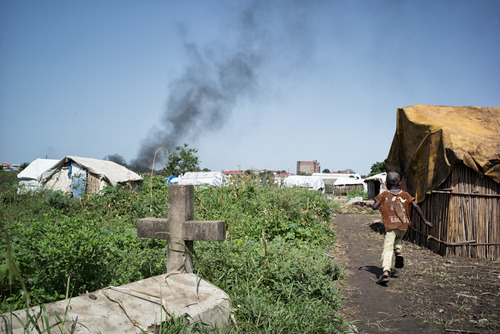St Mary Cemetery
For the past three weeks my house consisted of a small plastic container room behind the safe walls of Bedouine Hotel and Restaurant in Juba South Sudan. The room is not to bad and the bed is actually pretty good. We all share the bathrooms and showers, but it’s certainly doable. And even though breakfast really sucks and internet only works when it wants to, $85 a night is good value in this outrageous expensive city.
Opposite my hotel there is another wall. It’s been there since April, when the mayor or one of the other high civil servants of Juba, decided that the graveyard needed a wall around it. I’m not sure if that is the actual reason and I’ll probably will never know. What I do know is that on that same graveyard there is a refugee camp situated with an estimate of about 800 people living there. The camp used to be next to the Nile, but they were forced to move when developers started to build on the grounds they stayed before. So they moved to the cemetery.

Living between the graves, these people have close to nothing. When I visited yesterday afternoon, the chief asked me to come back the next morning. It wasn’t a good time as everybody was drunk. People wouldn’t accept me taking pictures, and he couldn’t guarantee my safety. While walking out I witnessed some prime example of domestic violence and a couple of (drunk) women showed me their children who had open wounds from burns as the kitchen here consist of open fire. The things I saw in that brief 45 minutes kept me up all night.

As agreed, I showed up this morning once more to sit down with the chief and some elders - men and women- to talk. They told me about moving from the Nile, the building of the wall - shutting them out from the rest of Juba- and them living in mud with no help whatsoever. It’s rainy season now and, as they don’t get any canvas or other utilities to fix the leaks in their “houses” most of them are almost as wet from the inside as they are from the outside. He looked me straight in they eyes when he asked me if I’d been to a community living on a cemetery before. I had to fight my tears and as I’m writing this in the safety of my little dry plastic container I can let them run freely.


Walking through the camp with the chief, I could see how these people suffer. The surreal pictures of people living between these graves had such an impact on me. All of a sudden the chief walked away from me… I watched where he was going and saw a little girl sitting in behind one of the huts, puking her guts out. He tried to comfort her and help her as much as he could. “Suffering of malaria”, was all he could say before we moved on as if nothing happened.


The only help they now get is from CCC, a foundation supporting orphans and street children, children that are victims of sexual violence and girls who are at risk of sexual exploitation. This foundation is responsible for sending some of the children in the ST Mary Camp to school and helps some of the families by letting them work in the compound garden. They also give the community some food packages. As the CCC compound and the schools are near the cemetery, the chief told me about his concern of them being moved away again.This would mean they would have to take the kids out of school and losing some valuable possibilities to do a little work.

Being here made me humble. It made me realise nobody should be living like this. Completely chocked up, I explained him the only thing I personally could do, was to tell their story and show the world how these people live…

14 notes
hanskiboy-blog liked this
go-bama liked this
maartjesmijmeringen-blog liked this
sorrowfat-blog liked this
homeontherangefinder liked this
februarysundays liked this
nurnielfa liked this
jenquest liked this
amanwithaleica posted this